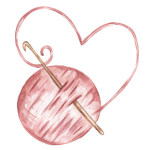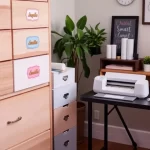If you’re looking for a DIY fabric wall organizer for small spaces, this guide will help you create a beautiful and functional solution using simple materials.
A wall organizer is a smart way to save space and reduce clutter.
It works well in bedrooms, craft rooms, bathrooms, or even kitchens.
With just fabric, thread, and basic sewing skills, you can create a piece that’s both useful and decorative.
Let’s get started with everything you need to know.
Why Make a Fabric Wall Organizer?
Fabric wall organizers are lightweight, easy to hang, and fully customizable.
They help you store mail, chargers, glasses, accessories, and even craft supplies.
If you live in a small space or want to keep your table free, they’re a perfect fit.
You can use leftover fabric or repurpose old clothes, making it an eco-friendly project too.
Plus, it’s a great introduction to sewing for beginners.
Materials and Tools You’ll Need
Here’s what you need to get started:
- Medium-weight fabric (cotton or canvas works best)
- Lining fabric (optional, for stronger pockets)
- Wooden dowel or a small branch (for hanging)
- Sewing machine or needle and thread
- Pins, scissors, measuring tape
- Iron and ironing board
- Fabric marker or chalk
- Ribbon, string, or rope (to hang the organizer)
Choose fabrics that are sturdy enough to hold weight but still easy to sew.
Design Ideas for Small Spaces
There are endless ways to design your organizer.
Here are three beginner-friendly ideas:
1. Single-Panel with 3 Pockets
Use one rectangular panel (e.g., 40×60 cm) with three horizontal pockets.
Each pocket is sewn across the width of the panel, creating three rows.
Perfect for bathrooms, kids’ rooms, or near your front door.
2. Vertical Strip with Tiered Pouches
Use a long narrow strip (e.g., 25×80 cm) with overlapping pockets placed diagonally or vertically.
This design looks elegant and saves horizontal space.
Great for hanging inside closets or narrow walls.
3. Grid Organizer
Create a square panel with 6 to 9 square or rectangular pockets arranged in rows.
It looks modern and works well for offices or craft rooms.
Label the pockets or use different fabric patterns to separate categories.
Step-by-Step Guide to Making Your Fabric Organizer
Let’s walk through how to make the Single-Panel with 3 Pockets version:
Step 1: Cut the Fabric
Cut one large rectangle for the back panel: 40 cm wide × 60 cm tall.
Then cut three smaller rectangles for the pockets: 40 cm wide × 20 cm tall each.
You can adjust the size based on your space.
Step 2: Prepare the Pocket Pieces
Fold the top edge of each pocket piece by 1.5 cm and press it with an iron.
Then sew along the folded edge to create a clean top seam.
This gives the pockets a neat finish.
Step 3: Position and Pin the Pockets
Lay the back panel flat.
Place the first pocket at the bottom, aligning it with the edges.
Place the second and third pockets above it, slightly overlapping or spaced evenly.
Pin them in place before sewing.
Step 4: Sew the Pockets to the Base
Sew the left, right, and bottom sides of each pocket to the base fabric.
Backstitch at the top corners for extra strength.
You can also sew vertical lines through each pocket to create compartments.
Step 5: Create the Top Casing
Fold the top of the panel by 5 cm to the back side.
Sew along the edge to form a tube where the wooden dowel will go.
Slide the dowel inside and attach a string or ribbon to each end for hanging.
Step 6: Finishing Touches
Iron the entire piece to remove wrinkles.
Check all seams for strength before hanging.
You can add labels, buttons, or decorative stitches for a personal touch.
Customization Tips and Finishing Options
Want to personalize your wall organizer?
Here are a few ideas:
- Use patterned fabric for visual interest
- Add iron-on labels or vinyl text
- Stitch a name or category above each pocket
- Use contrast thread colors for fun details
- Add small loops or hooks at the bottom for keys
Customization makes the project even more functional and beautiful.
Where to Use It: Smart Placement Ideas
This wall organizer works great in:
- Entryways: to hold keys, mail, sunglasses
- Bathrooms: to store brushes, makeup, hygiene items
- Bedrooms: for books, remote controls, notebooks
- Craft rooms: for threads, scissors, ribbons
- Kitchens: to keep recipes, pens, notepads
Small spaces benefit most from vertical storage like this.
Can You Sell It? Absolutely!
Handmade fabric organizers are popular on Etsy, local fairs, and Instagram shops.
You can offer them in themed collections (kids, home office, minimalist).
Make your product stand out with eco-friendly tags and high-quality photos.
Bundle it with matching accessories like fabric baskets or coasters.
Start small — and grow as demand builds.
Final Thoughts
Making a DIY fabric wall organizer for small spaces is a rewarding and practical project.
You only need basic tools and fabric to create a smart storage solution.
It’s a great way to learn sewing, declutter your space, and even earn income.
Whether you’re crafting for yourself or selling your pieces, this project is a winner.
So grab your materials and start stitching today!



